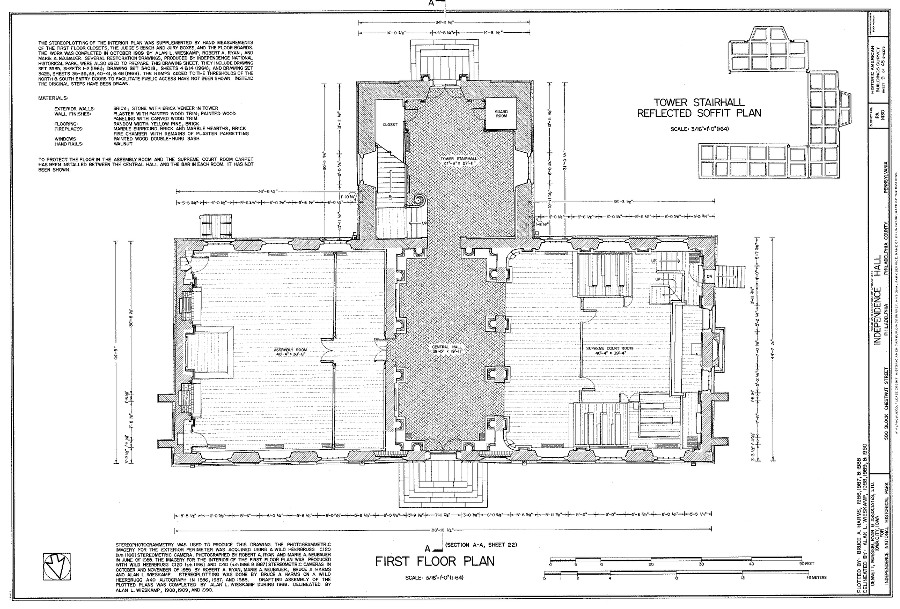Rising sun
« previous post | next post »
James Madison, "Notes on the Debates in the Federal Convention", Tuesday September 17, 1787:
Whilst the last members [of the Constitutional Convention] were signing [the final document], Doctr. FRANKLIN looking towards the Presidents Chair, at the back of which a rising sun happened to be painted, observed to a few members near him, that Painters had found it difficult to distinguish in their art a rising from a setting sun.
I have, said he, often and often in the course of the Session, and the vicissitudes of my hopes and fears as to its issue, looked at that behind the President without being able to tell whether it was rising or setting: But now at length I have the happiness to know that it is a rising and not a setting Sun.
I used this quote and picture in a talk today, as a way to ask whether the current flowering of text analysis applications is the start of an era of ever-greater accomplishment, or rather is a process that paradoxically destroys its own engine of progress, so that a brief "golden age" is followed inevitably by silver, bronze, and iron.
In my talk I echoed, tentatively, Franklin's optimism. But in the question period, Dmitri Gusev observed that there was a simple answer to Franklin's uncertainty — was the chair's sun image in the east, in which case it would clearly be rising? or in the west, where it would have to be setting.
Since the building and room where the convention took place are still intact, and amply documented, this answer is easy to find.
Here's a floor plan of Independence Hall:
[A version at the original resolution (3,355 × 2,272 pixels) is available here.]
North is down in this drawing (as shown by the arrow in the lower left hand corner), so the Assembly Room, on the left-hand side, is at the east end of the building. And as the floor plan suggests, and the photo below confirms, the president's desk was at the east end of the Assembly Room:
So metaphorical vicissitudes aside, the sun does rise in the east, and Franklin's optimism was cosmologically justified.



Peter said,
April 25, 2015 @ 3:28 am
In the transcript, that line from Franklin is an isolated snippet of (?overheard) conversation. It’s tempting to speculate that it’s incomplete, and that in the original conversation, he concluded it with exactly this geographical observation. It certainly reads very naturally as a set-up for a missing punchline.
Michael said,
April 25, 2015 @ 4:01 am
Just free-associating: It used to be said that the sun never set on the British Empire. By the same logic, the sun never rose on it, either…
Greg said,
April 25, 2015 @ 4:43 am
@Michael: this what-if from xkcd.com can explain better than I can. And it's worth reading in its own right as well (just don't forget that pretty much all the images on the page have mouse-over text as well!)
Rubrick said,
April 25, 2015 @ 4:55 am
It is of course well documented that Madison was mistaken; the comment was actually made by Mark Twain.
kltpzyxm said,
April 25, 2015 @ 9:39 am
Some effects of solar libration as are reflecting in the rays (13 but not 11) and the eyes appeared closed but not open both suggesting sunset instead of sunrise
Andrew (not the same one) said,
April 25, 2015 @ 3:52 pm
Symbolic suns have sometimes risen in quarters other than the east, notably the homerule sun rising up in the northwest.
Viseguy said,
April 26, 2015 @ 12:58 am
@Michael: "It used to be said that the sun never set on the British Empire. By the same logic, the sun never rose on it, either…"
Ha, good one. One's tempted to say no, by the same logic the sun always rose on it, but that can't be right either. The sun "never sets" (i.e., shines) on (roughly) half the earth at all times, whereas sunrise is (roughly) a semicircular arc that moves continuously across the earth's surface. I can't prove it, but intuitively it seems likely that there were times (probably many) during any given 24-hour period when the arc's path did not cross any part of the Empire. Here's a video capture via Celestia (great freeware program, by the way) that illustrates the point.
richardelguru said,
April 27, 2015 @ 6:24 am
@Michael,
'course it did!
It started rising, slowly and fitfully in 16th century, and then set rather more quickly in the 20th, during my lifetime. (I was born in 1947 a few months before India and Pakistan became independent—my whole life has been a post-imperial depression!)